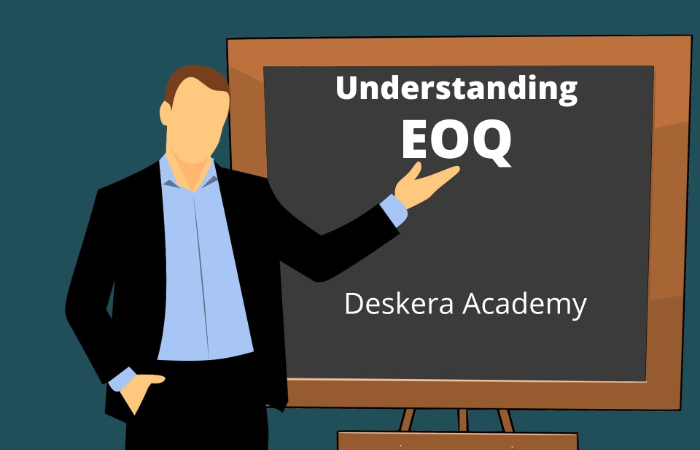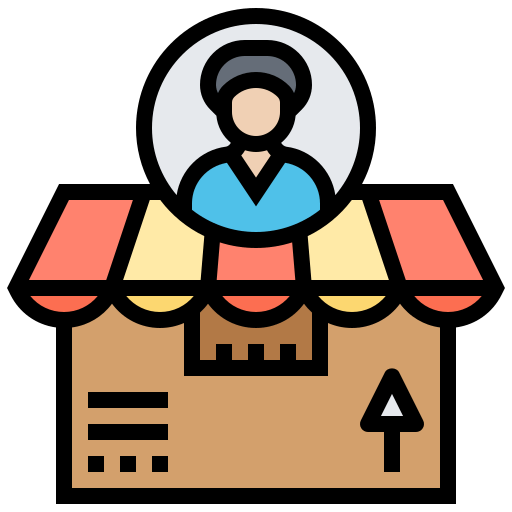It’s essential for any business that buys and maintains inventory to place orders in the quantities that best suit its needs. This is where the economic order quantity (EOQ) comes into the picture.
Why understanding the EOQ is essential for your business?
Calculating Economic Order Quantity (EOQ) can benefit your business. Understanding the EOQ will ensure that you have enough products on hand to meet the annual demand.
With more than ten years of sourcing experience while using the EOQ formula, we can guide you through all the processes of sourcing your products, starting from how to find manufacturers to shipping your goods.
We have compiled a complete guide to help you calculate EOQ.
Let’s Start!

What is an Economic Order Quantity (EOQ)?
Economic order quality (EOQ) is a term used in the industries of Logistics, Operations, and Supply Chain Management.
If you have a limited quantity of a product, you may miss out on sales opportunities and degrade the customer experience. Excessive amounts of a particular product might increase storage costs and reduce your cash flow.
Economic Order Quantity EOQ is a method to calculate the quantity and frequency of orders to meet a level of demand rate. EOQ is also used to lower the total cost per order and inventory shortages. Inventory shortage costs are incurred by companies when they have no inventory in stock.
Why should you be calculating EOQ?
Economic order quantity is a prominent factor in your organization’s success. Purchasing too much can result in high inventory total cost and take resources off from other company activities, it can help with other factors.
A form of working capital is inventory management. Working capital refers to the assets required by a company to run daily. But, having too much working capital can cut your earnings and create a high potential cost.
When it comes to organizing your office supply store, economic order quantity may not be very useful. It is especially critical when considering high-volume or significant purchases. EOQ has more influence on earnings as your orders and inventory expand and scale. You get a better EOQ rate on Bulk purchases than on small shipments. Regarding inventory management costs, going bulkier purchases does not work. Make better decisions!
Benefits of Economic Order Quantity (EOQ)

To maximize profits, smaller companies need effective inventory management. A fundamental element of a continuous review inventory system is the Economic Order Quantity model.
Small business owners should test the benefits of this inventory model and why they should put it in place. Here’s a list of benefits that add up to saving total costs and improving your business:
- Cutting storage and holding costs:
Inventory storage costs may be expensive for small business owners. The essential advantage of the economic order quantity is the customized indications for the most cost-effective quantity of units per order.
If holding inventory costs are high and ordering costs are low, it may make more orders of fewer products to reduce the annual holding cost.
- Bulk-purchasing discounts:
The EOQ formula may recommend buying a significant amount in fewer orders. To take advantage of bulk purchase discounts and cut ordering cost while considering the holding costs, and minimizing to total annual inventory cost, quantity discounts offered is a necessary advantage to keep in mind.
- Unique for every business:
Maintaining enough inventory levels to meet customers’ needs is tricky for many businesses.
Another advantage of the economic order quantity EOQ model is that it offers precise information, such as how much inventory to maintain, how many products to order, and the total setup costs. This speeds up the restocking process and improves customer service. It improves your business strategy and planning. You have a full idea of when and how much you order. It also helps in budget and finance management.
How to use EOQ in your business?
The EOQ formula is easy to calculate. It does need several assumptions, such as a consistent demand rate, costs that remain constant, and products to restock. It does not consider seasonal changes.
Another issue is that the EOQ is based on a single product. If a company sells many products, the EOQ must be calculated and tracked for all products separately. My manager keeps EOQ of every product separate then we combine all data while budgeting. Also, the demand rate affects our strategy too.
The Economic order quantity also does not account for seasonal or changing markets. Thus, it must be updated to account for seasonal and market changes.
The most effective approach to using EOQ is to track products and other variables in the industry. We generate a new economic order quantity for each order to reach the minimum order quantity (MOQ).
Suggested reading: Minimum Order Quantity (MOQ)

Here are more ways to use the EOQ:
1. Combine it with a different inventory formula:
Calculating EOQ is simple, and its formula may be combined with the reorder point formula to allow a company to decide when to order extra inventory. Using these calculations together can help the company avoid running out of stock for its products while keeping just the needed inventory. Yet, there are more methods to combine the EOQ with reorder points to improve your inventory management workflows.
The EOQ will also help you gain control over your inventory and reduce costs.
2. Make orders based on the results:
The EOQ indicates how much of a product a company should order to efficiently use that amount when generating purchase orders in your point-of-sale (POS) system if it has that capacity.
3. Establish reorder points in your POS system:
Several POS systems allow you to set reorder points or inventory levels that indicate when more supply is needed. You’ll be prompted to make another purchase when your product inventory levels approach their reorder level, while considering the purchase cost.
Looking for the Best China Sourcing Agent?
Leeline Sourcing helps you find factories, get competitive prices, follow up production, ensure quality and deliver products to the door.
The Economic Order Quantity Formula
According to the economic principle known as economies of scale, the cost per unit of ordering a product lowers as the quantity of the order increases.
The more the total volume of an order, the higher holding costs and maintaining your inventory.
The EOQ enables companies to lower the total cost of ordering and storing inventory.
You may use the following formula to calculate the economic order quantity:
- D is the annual customer demand for your product or quantity sold per year.
- S is the setup cost per order or the cost of placing each order.
- H stands for the yearly holding costs per unit.
When all of this is added together, the EOQ equals the square root of [(2 x Demand x Setup cost) / Holding cost].
Keep in mind that Holding or storage costs fluctuate throughout the year. In rush seasons like last quarter, it’s high and low during the first quarter. It does not matter much if you have your own storage space.
The EOQ is often used to set the reorder within your inventory management operations. These indicators, when combined, inform you when to place an order and how much to spend (EOQ formula). This keeps you from carrying too much deadstock, stockouts, and reduces the holding cost.
Although the equation to calculate the EOQ is simple. When applied to a single product, it may be time-consuming and challenging to figure it manually for a whole inventory.
It should be noted that this value does not represent the product’s sale price, nor does it give information about restocking. It simply reflects the best quantity of products for every purchase order. The reorder point formula is slightly more complicated and represents the act of placing an order for more products.
Depending on the product’s importance to sales, the reorder can also be adjusted to contain a safety stock.
EOQ Example
EOQ formula can also be written as:
EOQ equals the square root of [(2 x Demand x Setup cost) / Holding cost].
Assume a fashion retail store specializing in men’s shirts and selling around 2000 pairs each year. It costs $10 for the store to keep a couple of shirts for a whole year, and placing an order costs $4.
The calculation of the case mentioned above, according to the EOQ formula, is as follows:
EOQ = Sq. root [(2 * 2000 pairs * $4 order cost) / ($10 carrying cost)]
Therefore, EOQ = 40 pairs.
The optimal number of orders for the store will be 40 pairs of shirts. Easy!
FAQs about EOQ
1. What companies use economic order quantity?
Different companies frequently use the EOQ model to calculate the quantities of products or materials to purchase. According to the most favorable conditions and the least considerable cost, every company should use the EOQ.
McDonald’s Corporation uses the EOQ model to determine the most optimal order quantity and to minimize costs.
2. How to Use EOQ to Improve Inventory Management?
The EOQ helps companies lower the variable cost of ordering and storing inventory. According to the economies of scale, the price per unit of ordering a product reduces as the optimal order quantity of the order rises.
3. How can EOQ help minimize inventory costs?
Considering the example above, if you order 40 units every time you place an order, you will cut your inventory holding costs, ordering, and even production costs.
What’s Next
The EOQ can be a helpful tool for small business owners who need to decide how much inventory to have on hand.
Knowing how many products to order each time and how frequently to restock to pay the lowest possible expenses is crucial.
It’s all about mitigating the expense and work required to set up your business.
When you choose to source from China, Leelinesourcing is your perfect choice to find the best factories and get competitive prices with the highest quality inspection.








